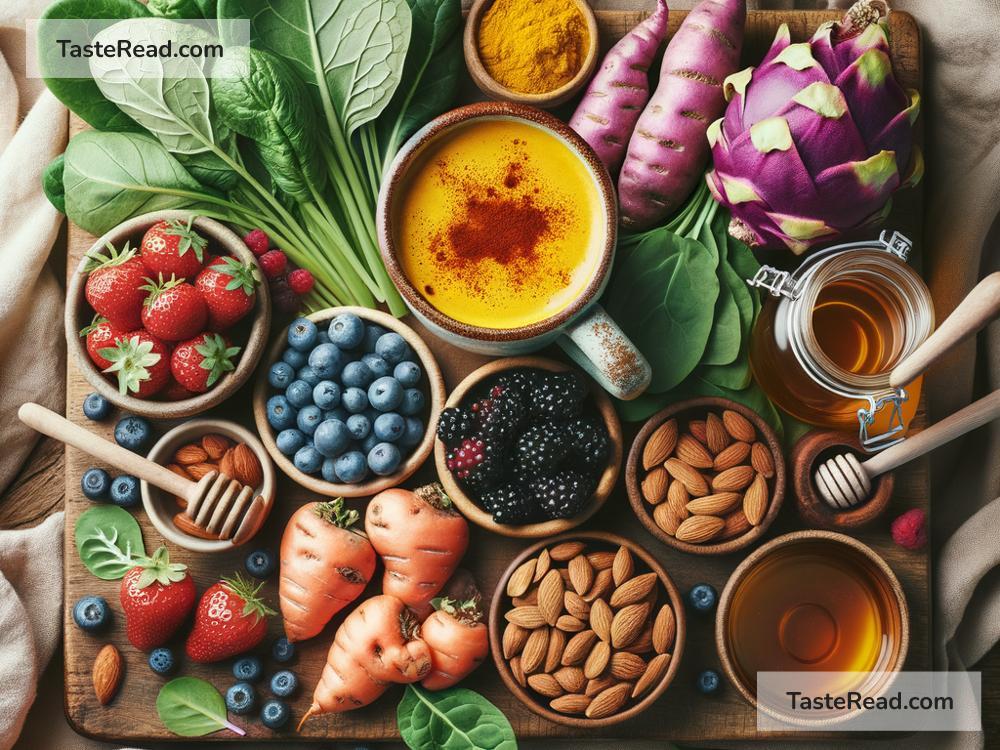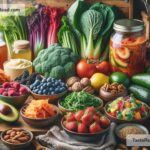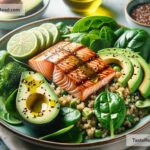Foods for Enhancing Healing: Eat Your Way to Recovery
Healing is an incredible process that our bodies perform every day, whether we’re recovering from an injury, surgery, illness, or even stress. While medical care plays an essential role, nutrition can make a big difference in speeding up the healing process and making us feel better. By eating the right foods, we provide our body with the nutrients it needs to repair and rebuild. In this article, we’ll look at simple, healing-friendly foods that you can incorporate into your diet.
Why Does Food Impact Healing?
Food is not only fuel; it’s medicine for our bodies. When we eat, we supply essential vitamins, minerals, proteins, and antioxidants that help tissue repair, support immunity, and reduce inflammation. Certain foods are especially rich in nutrients that aid in healing, making them great choices for recovery.
1. Protein-Rich Foods: The Building Blocks of Recovery
Protein is essential when your body is healing because it helps repair damaged tissues and build new ones. Without enough protein, your recovery process can slow down.
Examples of protein-rich foods:
– Eggs: Eggs are an excellent source of high-quality protein. They also contain vitamins A and E, which support skin and tissue repair.
– Chicken and Fish: Lean meats like chicken and fish provide protein without excessive fat. Fish, especially salmon, also contains omega-3 fatty acids, which reduce inflammation.
– Beans and Lentils: If you prefer plant-based options, beans and lentils are packed with protein, fiber, and minerals like iron that support your body during healing.
Tip: Aim to include a source of protein with every meal.
2. Fruits and Vegetables: Packed with Vitamins and Antioxidants
Fruits and vegetables are essential when healing because they boost the immune system and fight oxidative stress in the body. They’re rich in vitamins, minerals, and antioxidants, all of which help repair cells.
Examples of healing-friendly fruits and vegetables:
– Citrus Fruits: Oranges, lemons, and grapefruits are high in vitamin C, which is crucial for forming collagen—a protein that helps wounds heal and skin look healthy.
– Leafy Greens: Spinach, kale, and broccoli are full of vitamins like C, K, and A. Vitamin K particularly helps with blood clotting, which is important for healing wounds.
– Berries: Blueberries, strawberries, and raspberries are loaded with antioxidants that protect cells and reduce inflammation.
– Sweet Potatoes: These are rich in beta-carotene, which converts to vitamin A in your body and promotes skin health and cell repair.
Tip: Try to eat a rainbow of fruits and vegetables to make sure you’re getting a variety of nutrients.
3. Healthy Fats: Supporting Your Body’s Needs
Not all fats are bad! Healthy fats, like unsaturated fats, help reduce inflammation and help your body absorb important vitamins like A, D, E, and K. These vitamins are crucial in healing and growth.
Examples of healthy fats:
– Avocados: Packed with monounsaturated fats, vitamin E, and fiber, avocados are perfect for supporting overall health and healing.
– Nuts and Seeds: Almonds, walnuts, chia seeds, and flaxseeds contain omega-3 fatty acids and vitamin E that reduce inflammation and promote recovery.
– Olive Oil: Use olive oil as your go-to cooking oil or drizzle it on salads; it’s rich in anti-inflammatory compounds.
Tip: Avoid trans fats and stick to natural sources of healthy fats.
4. Whole Grains: Providing Energy for Recovery
When your body is healing, it needs energy. Whole grains provide slow-digesting carbohydrates that are a great source of energy for your body. Unlike refined grains (like white bread), whole grains pack fiber, B vitamins, and minerals to support healing.
Examples of whole grains:
– Quinoa: A grain that’s also rich in protein and essential amino acids.
– Brown Rice: Provides steady energy and is a source of magnesium, which helps with muscle and tissue repair.
– Oats: Great for breakfast, oats offer fiber and important nutrients like zinc, which supports your immune system.
Tip: Replace refined grains in your meals with whole grain alternatives when possible.
5. Hydration: Don’t Forget Water!
Water is often overlooked when we think about healing, but it’s absolutely essential. Staying hydrated helps transport nutrients around your body, flush toxins, and keep tissues healthy. If you’re recovering from surgery or illness, dehydration can slow down your recovery.
Ways to stay hydrated:
– Water: Drink plenty of plain water throughout the day.
– Herbal Teas: Chamomile or peppermint teas can soothe the stomach while keeping you hydrated.
– Broths: Chicken or vegetable broth provides both fluids and nutrients.
Tip: Sip water consistently, even if you don’t feel thirsty. Your body needs extra fluids during healing.
6. Supplements and Special Foods
In some cases, you might need to add supplements or specific healing agents to your diet. For example, turmeric is a spice that contains curcumin—a powerful anti-inflammatory compound. Other foods like garlic, ginger, and honey also have special healing properties.
While whole foods are always better than pills, some supplements like zinc or vitamin C can help if your diet is lacking these nutrients. Always consult your doctor before adding supplements to your routine.
Final Thoughts
Healing doesn’t happen overnight, but the food you eat can speed up the process and make it more effective. By focusing on protein-rich foods, colorful fruits and vegetables, healthy fats, whole grains, and plenty of water, you’re supporting your body’s natural ability to heal and recover. Remember, balance is key, so make sure you eat a variety of foods from all food groups. If you’re unsure what’s best for your specific needs, consult a dietitian or healthcare professional.
Eating for healing is a simple way to take control of your recovery and help your body bounce back stronger. So, stock up your kitchen with these healing-friendly foods and let your plate contribute to your health. You’ve got this!


